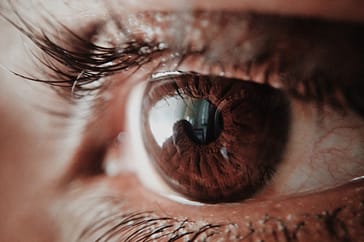Last year I was dealing with some health issues, and I felt that working long days was contributing to my symptoms. After much deliberation, I reduced my hours in hopes of finding some relief and more time for rest. At first it was great. I had more time to nap, rest, and do other things that felt restorative to me.
But it wasn’t long before I started filling that free time with more “stuff.”
Before I knew it, I had eaten up all that time with classes, volunteer work, and self-imposed deadlines and projects. I was just as busy (if not more so!) than before I reduced my hours!
Bewildered, I asked myself, “how did this happen?”
It was as if part of me could not STAND having time to be quiet and relax. There was an inherent guilt to resting, to having time that wasn’t “productive.”
All over again, I ended up giving away all of myself, to the point where it wasn’t sustainable.
It wasn’t my job that was draining me, it was my own inability to save a little of my power for ME.
You could even say that I was opening my heart TOO MUCH.
My life was missing a natural oscillation that is present in all of nature, that play of intensity and calm, of effort and ease.
It was seeming to me that my whole life, and the messages I was getting from the society around me, was all about effort and opening; doing as much as you possibly can…
without the bit about quieting, softening, and going inward.
Peter Levine, an industry leader in studying and treating trauma, describes this process as “pendulation.”
He believes that rediscovering expansion and contraction is the key to living a full and abundant life, with the ultimate goal of living a more expanded life.
Too much contraction is undesirable, this is established. Thinking too much, worry, fear, over planning, narrow focus (staring at a computer)… this creates a contracted state.
You can feel that contraction in your body- your neck, shoulders, face and maybe lower back become tense.
On the other hand, expansion is always desirable, and always the goal. This happens when you consciously relax your body, get a wider view (look out a window for 30 seconds and notice how your body changes), and settling into the present moment by noticing your breath and bodily sensations.
However, there is a trap that I call “FAKE expansion,” which is also undesirable and can even be harmful.
So what is “fake expansion?”
Over filling your life with STUFF and convincing yourself that it’s REALLY important (cringe, yup, that’s me!) at the expense of your own wellbeing.
Fake expansion is “opening your heart” in a situation where you feel exhausted and unbalanced.
It’s saying yes to so many things that you don’t leave any room to take care of yourself. It’s giving more than you have to give.
We do this ALL THE TIME. Sorry ladies, but women do this more than men, but the guys definitely do their fair share.
And maybe instead of asking how you can open your heart more, you should be asking “can you make space inside your heart for YOU before opening it up to everyone else?”
A.k.a. how do you keep some of that loving care and attention for yourself, so that when you give to and care for others, you can do it from a place of love and joy instead of burnout and martyrdom?
One way you can make space for your own heart is by physically changing the shape of your body to encourage more space in the BACK of the heart area.
Interestingly, as we open the back of our hearts physically, our decisions tend to reflect this and become more in support of self nurturing instead of over reaching.
Breathe into your Back
Our bodies are so fascinating. The sympathetic nerve ganglia, which is a fancy way of describing the nerves that make you feel anxious, stressed, worried, angry…generally amped up…live between the vertebrae in your upper back spine. So, if you are always “opening your heart” by pushing your chest up and trying to stand or sit up really straight and never going the other way (rounding your back) you’re going to have a heck of a time getting your brain and body to relax.
Not to worry! You can do a simple exercise to expand the back of your heart. Here’s how to open your upper back:
Re-Establish Physical Boundaries:
Another way to encourage healthy expansion is by re-discovering the boundaries of your physical body, which reminds the mind to keep a little of that loving energy for yourself.
By re-establishing the boundaries of our bodies, we learn to expand. Here are some ways to develop and be aware of the boundaries in your body. This embodiment of where you end and the rest of the world begins teaches your nervous system how to create healthy boundaries in your life.
Here’s how to establish the boundaries of your body:
Are you are needing to create a little (or a lot) more space in your heart for you, so that you can give from a whole and rested place? Or do you need to remind your nervous system what it means to have meaningful boundaries? Or perhaps you’re like me, and you really needed both.
Whatever the case, the fact is that our society drives us to do more, push harder, be better, all the time. And that doesn’t honor the law of nature, it doesn’t honor pendulation.
Try introducing a little more space for you into your life, and see if that allows you to expand a little more. We not only deserve some space for ourselves, we need it to be sustainable.








